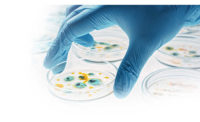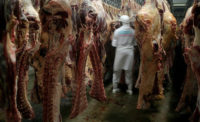Three of the meat industry’s emerging technology trends are rapidly developing in parallel: 1) traceability systems, such as blockchain; 2) whole genome sequencing (WGS); and 3) a greater understanding of how pre-harvest actions can affect the presence of pathogens at slaughter. Their likely convergence in the not-too-distant future will likely lead to systematic changes in the industry’s approach to controlling pathogens and foodborne illnesses. These technologies also have the potential to alter our present approach to accountability along the supply chain.
The litigation related to the 2000 E. coli O157:H7 outbreak at two Sizzler franchise restaurants provides a good case study to illustrate the new challenges that improved traceability may pose. In the Sizzler case, the restaurants failed to observe basic food safety principles regarding cross-contamination. Moreover, there was no proof that the packing establishment violated the Federal Meat Inspection Act (FMIA); E. coli O157:H7 is not an adulterant in intact meat. However, under Wisconsin state law, the restaurants prevailed against the packer and the packer was held responsible for the majority of the damages associated with the outbreak on the basis that it shipped products with pathogens and could not rely on its customer to control the hazard. In short, complying with federal and state meat laws may not shield an establishment from financial liability.
The lessons of the Sizzler case should be considered in light of new developments in traceability technology. While consumers increasingly demand retailers and restaurants provide more transparency about the food they purchase, new traceability technologies can expand liability for foodborne illness outbreaks beyond our traditional understanding. Emerging blockchain technology, which is already used by some major Chinese retailers, enables consumers to accurately trace a package of meat all the way through the supply chain back to the farm level. This same technology could be used to assist in tracing pathogen contamination or even quality issues through the supply chain back to the producer level. It is conceivable that litigation related to an illness outbreak could ensnare farms or feedyards that have historically avoided scrutiny for food safety concerns.
WGS technology could also alter the traditional approach to assigning liability in foodborne illness litigation. The collaborative GenomeTrakr project allows food safety and public health authorities to more rapidly identify and isolate pathogens at the source. WGS, used in conjunction with traceability, can be use to track contamination farther upstream beyond the slaughterhouse. Identifying pathogens at their source could improve food safety; however, this can also open producers to liability or cause them to lose contracts with buyers.
Amid the major developments in product and pathogen tracing, we are also gaining a better understanding of how pre-harvest conditions or controls can, to an extent, have an impact on pathogens entering the supply chain. Research is demonstrating that animal housing practices, pest management, feed and water inputs and health management all affect whether pathogens ultimately make it into a slaughterhouse. Farmers, feedyards and growers have not traditionally been held liable or accountable for downstream contamination. But as pathogen-management best practices become more common, there is a greater likelihood that a jury in a foodborne illness outbreak case could hold a producer liable for failure to maintain best practices.
These technologies will ultimately improve our food safety system and should result in fewer outbreaks that harm consumers. These technologies also may change relationships along the supply chain. Buyers and integrators may demand that growers implement best management practices to control pathogens. Retailers can more easily hold packers or processors liable for foodborne illness outbreaks.
In the long term, these technologies should be applied in a thoughtful manner that will promote food safety. Farmers and ranchers will resist systems that seek to manage pathogens through a punitive approach. Instead, the technology would be best used to identify pathogen sources in the supply chain and cooperate with the various parties to fix problems and reduce pathogens in the food system. NP







